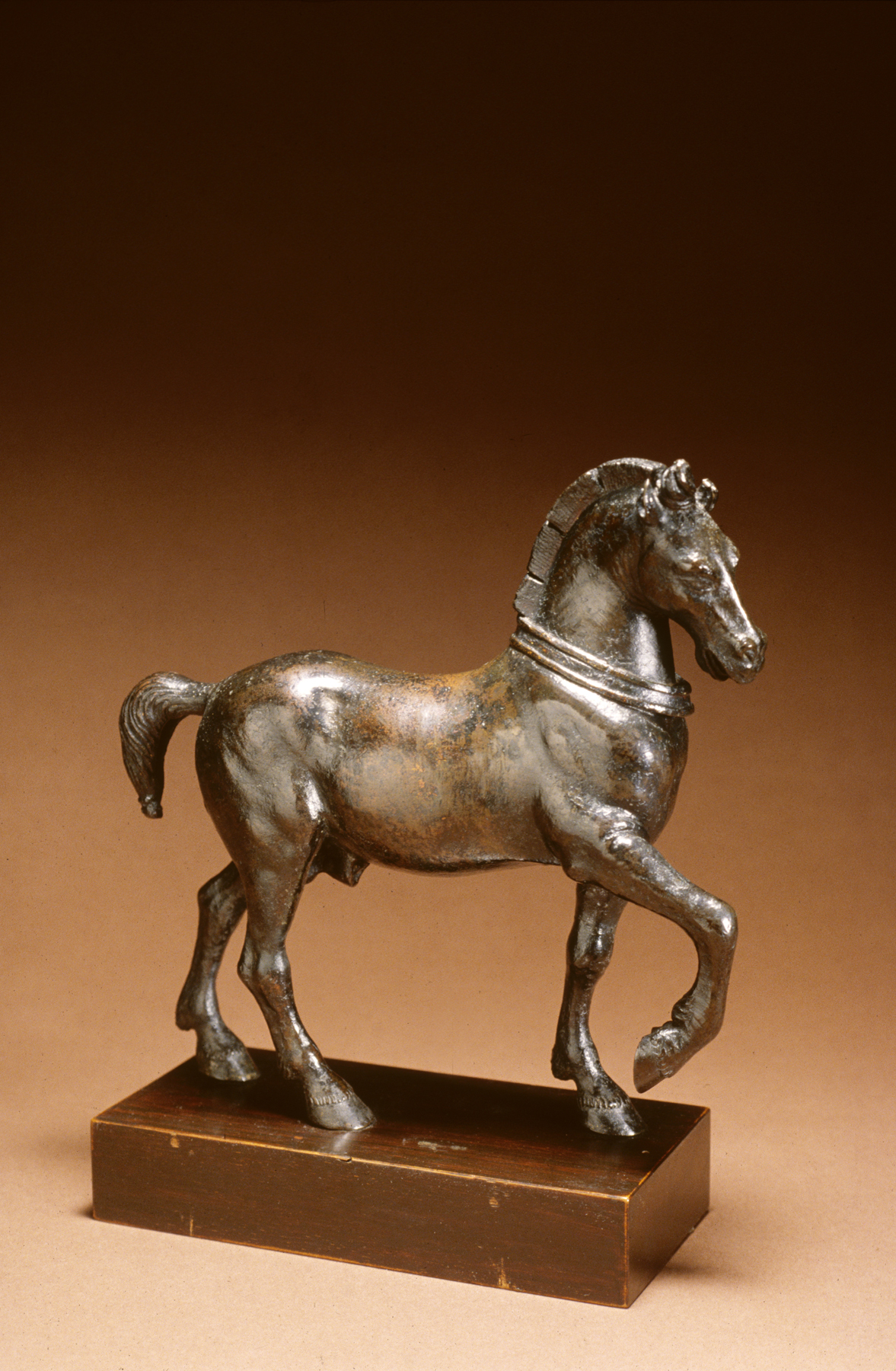Walking Horse "after Lysippus"
This graceful, elegant creature is a small-scale copy of one of the four life-size walking horses on the facade of the Basilica of St. Mark in Venice. In the Renaissance, they were thought to have been cast by the great Greek sculptor Lysippus, and, therefore, reduced copies were in great demand. The life-size horses were originally from a "quadriga" (four-horse chariot) of a type installed atop a triumphal arch in ancient Rome. In the 4th century, Emperor Constantine took the horses to his new capital Constantinople (present-day Istanbul, Turkey). In the 1200s, they were stolen by Crusaders, who brought them to Venice.
Provenance
Provenance (from the French provenir, 'to come from/forth') is the chronology of the ownership, custody, or location of a historical object. Learn more about provenance at the Walters.
Henry Walters, Baltimore, 1922-1930 [mode of acquisition unknown]; Walters Art Museum, 1931, by bequest.
Exhibitions
| 1995 | The Allure of Bronze. The Walters Art Gallery, Baltimore. |
| 1971-1972 | World of Wonder. The Walters Art Gallery, Baltimore. |
Conservation
| Date | Description | Narrative |
|---|---|---|
| 11/1/1958 | Treatment | cleaned |
| 1/9/1967 | Treatment | cleaned |
| 1/1/1970 | Treatment | cleaned; other |
| 3/14/1978 | Treatment | cleaned; coated; loss compensation |
| 12/14/1987 | Treatment | cleaned |
| 12/14/1987 | Examination | examined for condition |
| 4/27/1995 | Loan Consideration | examined for loan |
Geographies
Italy, Padua
(Place of Origin)
Italy, Venice (Place of Origin)
Measurements
H: 9 1/4 × W: 8 1/16 × D: 3 9/16 in. (23.5 × 20.5 × 9 cm)
Credit Line
Acquired by Henry Walters, 1922-1930
Location in Museum
Accession Number
In libraries, galleries, museums, and archives, an accession number is a unique identifier assigned to each object in the collection.
In libraries, galleries, museums, and archives, an accession number is a unique identifier assigned to each object in the collection.
54.50


